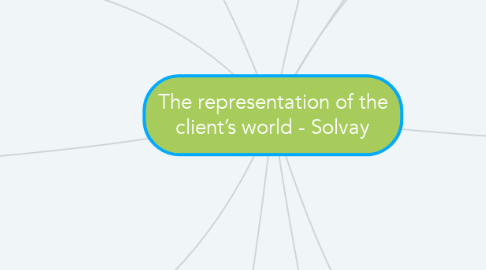
1. Sustainable Value
1.1. Performance chemicals
1.2. Advanced materials
1.3. Advanced formulation
2. People
2.1. 76% employee engagement index
2.2. 83% employee feel proud to work at Solvay
2.3. 9% employee turnover
3. Technology
3.1. Electrification
3.2. Lightweighting
3.3. Resource efficiency
3.4. Healthcare
3.5. IoT/Digitalization
3.6. Eco-friendly based solutions
4. Environment
4.1. Greenhouse gas emission
4.1.1. Solvay is committed to reducing greenhouse gas emissions by 1 million tons no later than in 2025, by improving its energy efficiency and energy mix and by investing in clean technologies.
4.2. Energy
4.2.1. In the field of energy supply, Solvay has consistently implemented programs to reduce its energy consumption for many years.
4.3. Air quality
4.3.1. Solvay is committed to improving air quality at local and regional levels, in close cooperation with local stakeholders. In the framework of its environmental plan, Solvay focuses on the following pollutants: nitrogen oxides (NOX), sulfur oxides (SOX), and non-methane volatile organic compounds (NMVOC).
4.4. Waste and hazardous materials
4.4.1. For industrial waste and particularly hazardous waste, the focus is on switching to more sustainable pathways that avoid landfilling or incineration without energy recovery, and promoting material or thermal recovery.
4.5. Employee engagement and well-being
4.5.1. This enables the Group to identify strengths and areas where the working environment and employee experience can be improved.
4.6. Diversity and inclusion
4.6.1. Solvay commits itself to equal opportunities and encourages diversity and inclusion at every level of employment in the company. This commitment is grounded in Solvay’s principles of ethical behavior, respect for people, customer focus, empowerment, and teamwork.
5. Leadership and Governance
5.1. Management of the legal, ethics, and regulatory framework
5.1.1. Commitments and policies
5.1.2. Resources and responsibilities
5.1.3. Grievance mechanisms
5.1.4. Communication and training
5.2. Critical incident risk management
5.2.1. Solvay’s approach to preventing process incidents is based on the 14 OSHA items of Process Safety Management System, with special attention paid to Process Hazard Analysis.
6. Finance
6.1. €10.3 billion Underlying net sales in 2018
6.2. €2.2 billion underlying EBITDA
6.3. 50% net sales generated by sustainable solutions
6.4. more than 50% sales in faster growing economies
7. Resources
7.1. People
7.2. Financial
7.3. Natural resources
8. Strategy
8.1. Create a more sustainable future
8.2. Committed to well-being at work
8.3. Focus firmly on customers
8.4. Sustainable Portofolio Management
9. Innovation
9.1. Dynamic innovation portfolio management
9.2. Champion collaboration
9.3. Get closer to customers
9.4. Empower teams and foster diversity
9.5. Leverage digital
10. Risk management
10.1. Security
10.2. Ethics and compliance
10.3. Industrial safety
10.4. Transport accident
10.5. Climate transition
10.6. Cyber risk
10.7. Chemical product usage
10.8. Other risks
10.8.1. Financial risk
10.8.2. Occupational diseases and pandemic risk
10.8.3. Environmental risk
10.8.4. IT risk
11. Social Capital
11.1. Customer welfare
11.1.1. Since 2014, each Global Business Unit has run a customer satisfaction survey at least once every two years to check their strategic alignment with the trends in their business environment. The insights gathered from the customers will systematically trigger action plans to adapt the value proposition so Solvay can better serve them and accelerate its growth.
11.2. Societal actions
11.2.1. Each site is invited to design its own local societal action plan in accordance with the principles of the Solvay Way framework and the needs of surrounding communities. Guidelines are provided to the sites, inviting them to start by designating a working group to update the site’s plans annually in pursuit of continuous improvement.
